Alternate name Tell el-Mishrife Periods Bronze Age Region Levant | Type Settlement Cultures Amorite Period Bronze Age | |
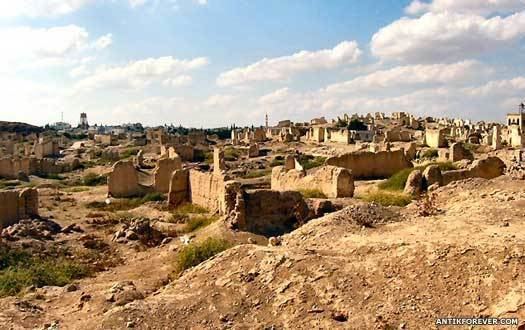 | ||
Location Al-Mishirfeh, Homs Governorate, Syria Founded Approximately mid 3rd millennium BC Weather 14°C, Wind W at 35 km/h, 62% Humidity | ||
Qatna in pak style
Qatna (Arabic قطنا, modern Tell el-Mishrife, Arabic المشرفة) is an archaeological site in the Wadi il-Aswad, a tributary of the Orontes, 18 km northeast of Homs, Syria. It consists in a tell occupying 1 km², which makes it one of the largest Bronze Age towns in western Syria. The tell is located at the edge of the limestone-plateau of the Syrian desert towards the fertile Homs-Bassin. The tell is named after the adjacent modern town of al-Mishirfeh.
Contents
- Qatna in pak style
- Free qatna camp at bhadurpura jamait ul quresh hyd
- History
- Historical geography and trade
- History of the excavations
- Finds
- Visible remains
- References
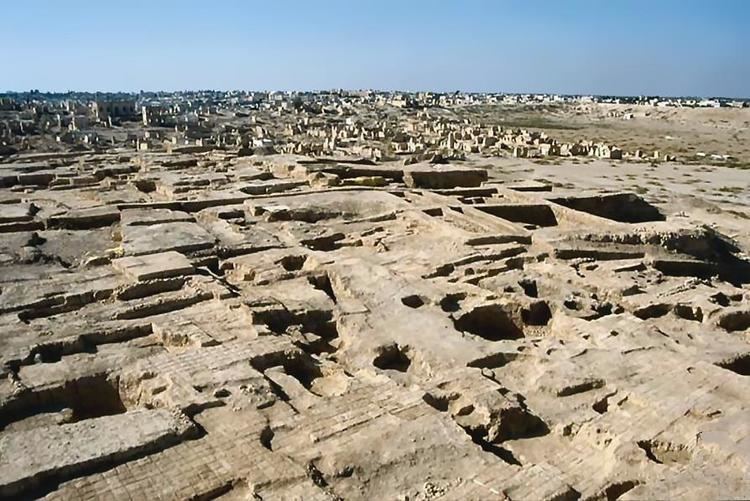
Free qatna camp at bhadurpura jamait ul quresh hyd
History
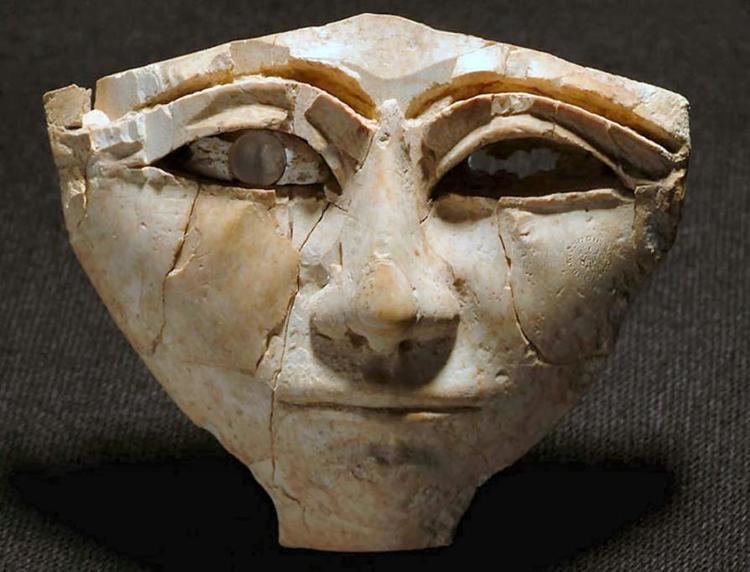
The first finds at Qatna date to the mid- to late 3rd millennium BC, although this early period is not well represented.

The find of a 12th Dynasty Egyptian sphinx belonging to Princess Ita, daughter of Amenemhat II (1875–1840 BC) shows early Egyptian influence, although it is not clear at what time the sphinx got to Qatna (the sphinx was found within the debris of the Late Bronze Age palace).
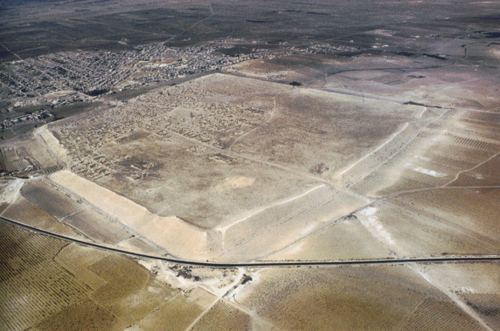
The first king of Qatna (Qatanum) known by name from the Mari archives is Ishi-Adad ("Haddad" or "Adad is my help"), an Amurru or "Amorite". He was a confederate of Shamshi-Adad of Upper Mesopotamia. He was succeeded by his son Amut-pî-el who had been governor of Nazala as crown prince. This was in the time of Hammurabi of Babylon (1792–1750 BC). Beltum, the sister of Amut-pî-el was married to Jasmah-Addu of Mari. Contracts between Mari and Qatna define her as the principal wife of Jasmah-Addu. Her mother might have been Lammassi-Ashur from Assur or Ekallatum. Zimrilim of Mari was married to another princess from Qatna, Dam-hurasim. At its height, Qatna extended from Palmyra in the east, where it shared the borders with Mari, to Amurru in the west. After the destruction of Mari by Hammurapi, the written sources become sparse. Aleppo (Yamkhad) now became Qatna's most powerful neighbour, during the reign of Yarim-Lim III Qatna was temporarily dominated by Aleppo.
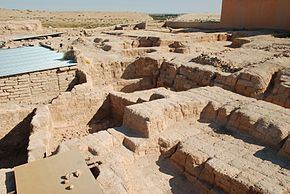
With the development of the Mitanni empire in Upper Mesopotamia, Qatna was incorporated but was located in disputed territory between the Mitanni and Egypt. The inscriptions of the so-called Nin-Egal temple (part of the Royal palace, room C) show that Mittanni were resident in Qatna. The campaigns of Pharaohs Amenhotep I (1515–1494 BC) and Thutmose I (1494–1482 BC) in Syria might have reached Qatna, but there is no conclusive evidence. On the 7th Pylon of the temple of Amun in Karnak, Thutmose III (1479–1425 BC) mentions that he stayed in the land of Qatna in the 33rd year of his reign. Amenhotep II (1427–1401 BC) was attacked by the host of Qatnawhile crossing the Orontes, but he remained victorious and acquired booty, among which the equipment of a Mitanni charioteer is mentioned. Qatna is mentioned in Egyptian topographic lists till the time of Ramesses III (1180 BC). Cuneiform tablets discovered under the Royal palace in Qatna mention a previously unknown king Idanda who ruled ca. 1400 BC.
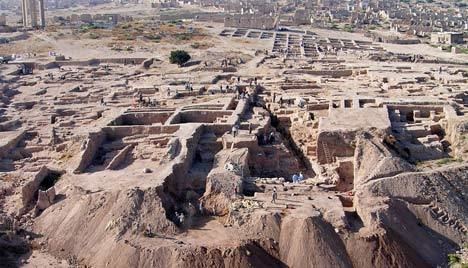
During the Syrian campaign of the Hittite king Suppiluliuma I (1380–1340 BC), Prince Akizzi of Qatna asked for the help of Akhenaten/Amenhotep IV, but as he was only concerned with his monotheistic reform symbolized by his own throne name Akhnaton and his new capital Amarna (abandoned after his death as all reforms were reversed), the town was among several Syrian city-states captured and plundered by the Hittites, the inhabitants deported to Hatti. During this same Amarna letters period, Prince Akizzi wrote 5 letters to Akhenaten. Texts from Emar describe how Qatna was attacked by Aramaic tribes in the late Bronze Age, so the town must still have been in existence.

The tell was settled in Neo-Babylonian times as well (a hilani has been excavated), but the town remained insignificant as nearby Emesa had taken over its position on the trade routes.
Historical geography and trade

In the 2nd Millennium BC trade routes developed connecting Mesopotamia with Cyprus, Crete and Egypt. Qatna was then situated near the end of the road connecting the middle Euphrates valley, for example Mari by way of Tadmor/Palmyra to the Mediterranean. Another route started from Aleppo, left the Euphrates at Emar and led via Halab, Qatna and Hazor to Egypt. The valley of Homs formed a connection to the Mediterranean near the port of Byblos and Tripoli, running between the Lebanon and the Ansari-mountains. Qatna is mentioned in the tin trade, which went from Mari via Qatna to the Mediterranean, Cypriote copper was transported in the other direction. The Mari texts mention cloth, clothing, a certain kind of bows, jewellery, woods, wine and two-wheeled chariots as trade goods reaching Mari via Qatna and partly going on to Babylon. Recent scientific investigation has determined that a carved hollow lion head vessel (circa 1340 BC) found at Qatna was made from amber imported from the Baltic region. This type of amber has also been found in the Mycenae region from the same time period.
History of the excavations
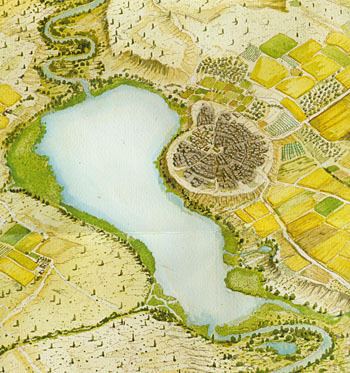
Tell-el-Mishrife was excavated between 1924–1927 and 1929 by Robert du Mesnil du Buisson while Syria was a French protectorate. He uncovered parts of the Bronze Age Royal palace, three gates and tombs on the slope between the upper and lower town ('Falaise'). The Syrian Direction Générale des Antiquités excavated on the Colline centrale and the gates. In 1999 excavations have been resumed by the Direction Générale des Antiquités et des Musées in Damascus, the University of Udine and the University of Tübingen. In 2002 the Royal tombs and cuneiform tablets were discovered.
Finds
The remains of the palace contained Cypriot imported ceramics dating from the middle Bronze Age. The new excavations have yielded locally made ceramics from the Old-Syrian (2000–1550 BC) and middle Syrian (1550–1200 BC) period.
In 2002, a headless basalt statue was found in a Late Bronze Age I rubbish pit (1600–1400 BC). It wears the typical 'Syrian coat' with thick borders that is normally taken as a sign of Royalty and might thus represent a yet nameless king of Qatna.
In a subterranean corridor under the 'Cour de throne', 63 cuneiform tablets were discovered in 2002. They were covered by the burned remains of several roofbeams. Maybe they were hidden during the Hittite invasion. The texts probably belong to the archive of King Idanda and contain both intelligence reports on the (desperate) political situation in northern Syria, the Hittite threat and domestic and administrative texts. The texts are written in a mixture of the Akkadian and Hurrian languages hitherto unknown.
Visible remains
The remains of the town-wall are still preserved to a height of 20 m in parts. It consists of mudbricks and limestone rubble that probably were originally faced by a mudbrick wall. An artificial ditch ran in front of the wall. The wall encloses a square area, which is rather unusual for a Bronze Age town. There were four gates in the middle of each side. The gates were faced by orthostats of white limestone and black basalt, the foundations were partly cut into the rock. The entrance was about 4m wide and led to a gate-chamber 8 m deep.
The hill near the centre of the town may have been the acropolis. The Royal palace was located on the 'Butte de l'eglise' in the Northwest corner of the upper town. It is one of the biggest buildings of its kind known so far in Bronze Age Syria. Unfortunately, numerous mudbrick-walls were overlooked during the excavations in the 1920s and dug away. Only walls faced with stone slabs or delimited by the hard floor surface remained. The layout of the palace of Qatna is very similar to that of Mari. Numerous basalt pillar bases have been found. This use of pillars is comparable to the palace of Yarim-Lim in Alalakh VII. The big dimensions of some rooms (the 'cour du throne' measures 20 m across) may indicate that cedar beams were used for the roof. The Palace dates to the Old-Syrian period and was maybe the residence of King Ishi-Addu (see below).
On the "Small Acropolis" in the North of the central mound a second palace has been discovered in 2002 which may be the residence of a member of the Royal family. The area housed a small Christian town that was resettled in the 1980s. Nowadays, New Mishrife has about 2500 inhabitants (2000 est.).
